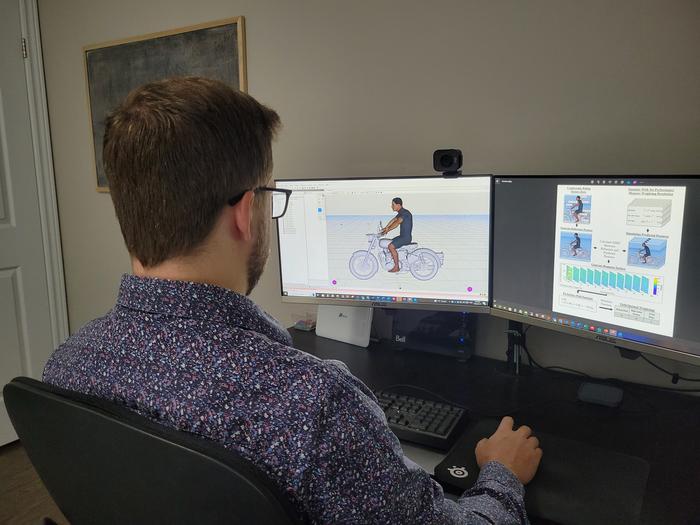Motorcycles are typically designed to fit the average-sized rider, but a new study from the University of Waterloo has found that this approach leaves taller and shorter riders at risk of discomfort and ergonomic issues.
Using software that simulates realistic motorcycle riding behaviors, researchers discovered that riders of shorter and taller statures need to make significant joint adjustments to achieve their preferred riding posture. Taller riders, in particular, must flex their ankles, knees, hips, and elbows more to interact with the motorcycle properly.
Digital Human Models Could Revolutionize Motorcycle Design
The study employed a digital human model (DHM) — an avatar representing a human of any weight, size, or sex — in a virtual environment. This innovative tool allows researchers to observe how humans interact with products like motorcycles without the need for physical prototypes.
“The use of DHMs in early two-wheeled motor vehicle design could help manufacturers improve safety, posture and comfort, in addition to saving costs,” said Justin Davidson, Biomechanics PhD candidate in Waterloo’s Department of Kinesiology and Health Sciences and co-author of the study.
By incorporating DHMs earlier in the design process, motorcycle manufacturers could potentially eliminate some of the trial and error steps, making improvements within the computer software before building anything. This approach could lead to significant cost savings in the long run.
Accommodating Diverse Rider Sizes Could Improve Safety and Comfort
As motorcycle riding continues to gain popularity worldwide, the study’s authors hope that companies will use tools like DHMs to improve their designs and accommodate riders who fall outside the average size range. This could be achieved by studying avatars with various weights, heights, and sexes within the digital model.
Davidson noted that the ergonomics of motorcycle riding is a relatively understudied area, despite its growing importance. As motorcycle sales increase, manufacturers are seeking new technologies to gain a competitive edge, and DHMs could play a crucial role in this process.
“DHMs aren’t as commonly used as they could be, and their potential for early design intervention could be useful not only when applied to motorcycles but for sitting in a car or even sitting in your office,” Davidson said.
The ultimate goal of this research is to encourage more widespread and confident use of DHM tools, allowing for earlier interventions that can improve safety and comfort for people in various settings.
The study, authored by Davidson and Waterloo’s Dr. Steven Fischer, was recently published in Taylor & Francis online.
Keyword/Phrase: motorcycle ergonomics design


